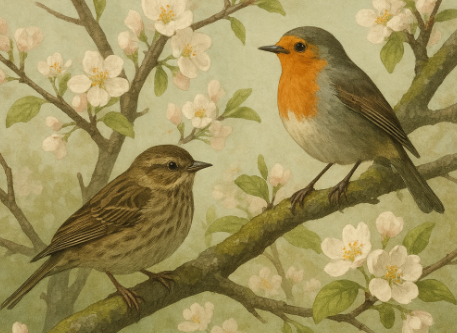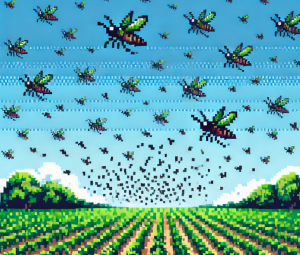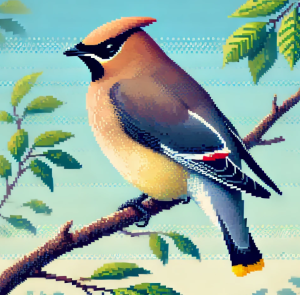
Is Nature Getting More Boring?
ou know that sinking feeling when you see a new strip mall where a forest used to be? Or when every fast food joint looks the same, no matter the city? It’s easy to assume that human activity is turning the planet into one giant, boring copy-paste of concrete and pigeons. Scientists have worried about something similar in nature—what they call biotic homogenization: the idea that we’re making ecosystems look more and more alike by wiping out local species and replacing them with the same weedy invaders everywhere.
But here’s the plot twist: A massive new study—think 97,783 ecological sites across land, water, and sea—just flipped that idea on its head. Turns out, the story of biodiversity under human pressure isn’t about boring sameness. It’s something way weirder… and way more important for the future of life on Earth.
Let’s dig into this global detective story and find out what’s really happening to nature when we show up.
The Great Nature Comparison: Who’s Impacted and Who’s Not?
Imagine being a scientist sifting through over 2,000 research papers—comparing places that humans have messed with (polluted, deforested, urbanized) to places that are still relatively untouched. This team did exactly that. They created the ultimate biodiversity battle royale: 3,667 side-by-side matchups of impacted versus pristine ecosystems.
Their goal? Answer some big, thorny questions:
- Are we losing local species in human-impacted areas?
- Are ecosystems around the world becoming more similar (homogenized) because of us?
- And do all human pressures—like pollution or climate change—hit nature in the same way?
The answers? Not what anyone expected.
First Revelation: Nature’s Not Just Shrinking—It’s Shifting
Let’s start with the obvious. When humans move in, local biodiversity usually takes a hit. Think fewer frogs in polluted ponds or vanishing bird songs in noisy cities. Across the board, the researchers found that local diversity—the number of species in a given area—decreases when we show up. That’s not too shocking.
But here’s where things get juicy: While we might be losing species, what’s left behind doesn’t always look the same from place to place. In fact, many impacted sites are becoming more different from each other than untouched areas. That’s right—differentiation, not homogenization, is what’s happening on the ground.
Instead of turning the world into one giant Walmart of wildlife, human activity is creating weird, patchy mosaics. In one forest, pollution wipes out sensitive mosses but spares spiders. In another, the spiders vanish but the beetles boom. It’s chaos—but not the copy-paste kind.
So… Is That a Good Thing?
Well, kind of? But also… not really.
Yes, differentiation sounds better than universal sameness. But don’t pop the champagne just yet. What we’re seeing isn’t creative biodiversity—it’s instability. Scientists describe these changes as community composition shifts. It’s like scrambling the ingredients of ecosystems. Species that once coexisted start dropping out or appearing in odd places. Think “ecological remix”—but no DJ is actually making sure the result still works.
These shifts matter because ecosystems aren’t just collections of random animals and plants—they’re tightly tuned systems. Break the balance, and things can spiral. Pollination can tank. Pest control can vanish. Food webs can collapse.
What’s Causing All This Ecological Musical Chairs?
The researchers pinpointed five major culprits of biodiversity change:
- Habitat change – Deforestation, farming, urban sprawl.
- Pollution – Especially the chemical kind (pesticides, fertilizers).
- Resource exploitation – Overfishing, logging, hunting.
- Climate change – Warming temps, shifting rainfall.
- Invasive species – Think cane toads or zebra mussels.
Each of these hits nature differently, but some are worse than others. Pollution and habitat destruction? The biodiversity wrecking balls. Not only do they decrease local species, but they scramble community structure the most. In contrast, climate change and invasive species cause changes too—but they’re more like slow burns than sudden explosions.
Big Organisms, Big Trouble
Another surprise: Size matters. The biggest biodiversity losses hit the biggest creatures—mammals, fish, reptiles. Microbes and fungi? They’re more resilient, likely because they grow fast, travel light, and don’t need much to thrive.
So while your gut bacteria might be thriving in polluted soil (go figure), charismatic megafauna—think elephants, bears, sea turtles—are vanishing faster than ever. It’s not just sad—it’s ecologically dangerous. These animals often play keystone roles in ecosystems. Remove them, and the entire system can wobble.
Local Loss = Global Weirdness
Here’s where things get philosophical: Losing species in one place doesn’t just hurt that one spot. It changes how ecosystems relate to each other. The study found that when local diversity drops, it usually means communities are becoming more different overall. It’s like cutting musicians from different bands—each band sounds more distinct, but none of them sound right.
This points to a troubling idea: we’re not just shrinking nature, we’re remixing it in unpredictable, unstable ways.
What This Means for You (and Planet Earth)
Biodiversity isn’t just a nice bonus for nature documentaries. It’s the foundation of everything—clean water, stable climate, pollinated crops, healthy forests. When we mess with it, we mess with ourselves.
This study is a wake-up call: Even if we’re not seeing total ecological sameness, we are seeing ecosystem unraveling at massive scale. It’s happening differently in different places, and it’s complicated. But it’s real.
The good news? Now we know more about how and where to act. Conservation can’t just be about preserving big animals or pristine parks. It has to deal with the messy middle—the polluted ponds, the fragmented forests, the overlooked microbes.
Let’s Explore Together 🐾🌍
Biodiversity isn’t just a science topic—it’s a life topic. Whether you’re a nature nerd, a city dweller, or someone who just likes bees in your garden, you’ve got a stake in this.
So, we want to hear from you:
🧠 What would you do to protect your local biodiversity?
🔍 Have you noticed wildlife shifting in your area—more raccoons, fewer frogs?
🔥 What’s the wildest nature fact you’ve learned this year?
Share your thoughts, photos, or rants in the comments or tag us on social media with #BiodiversityShuffle.



